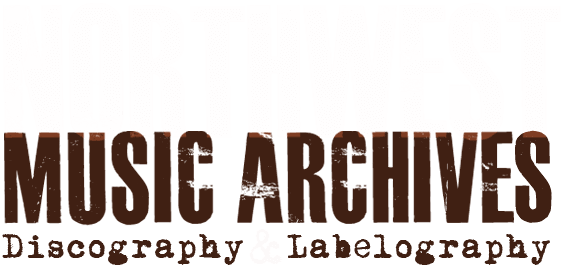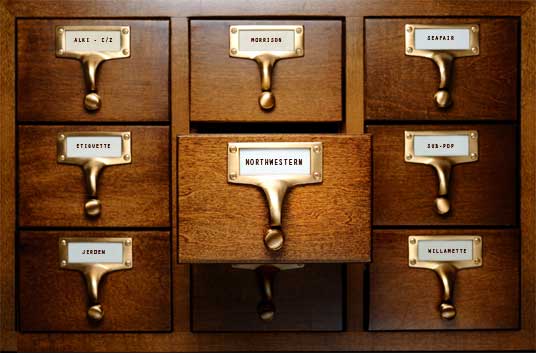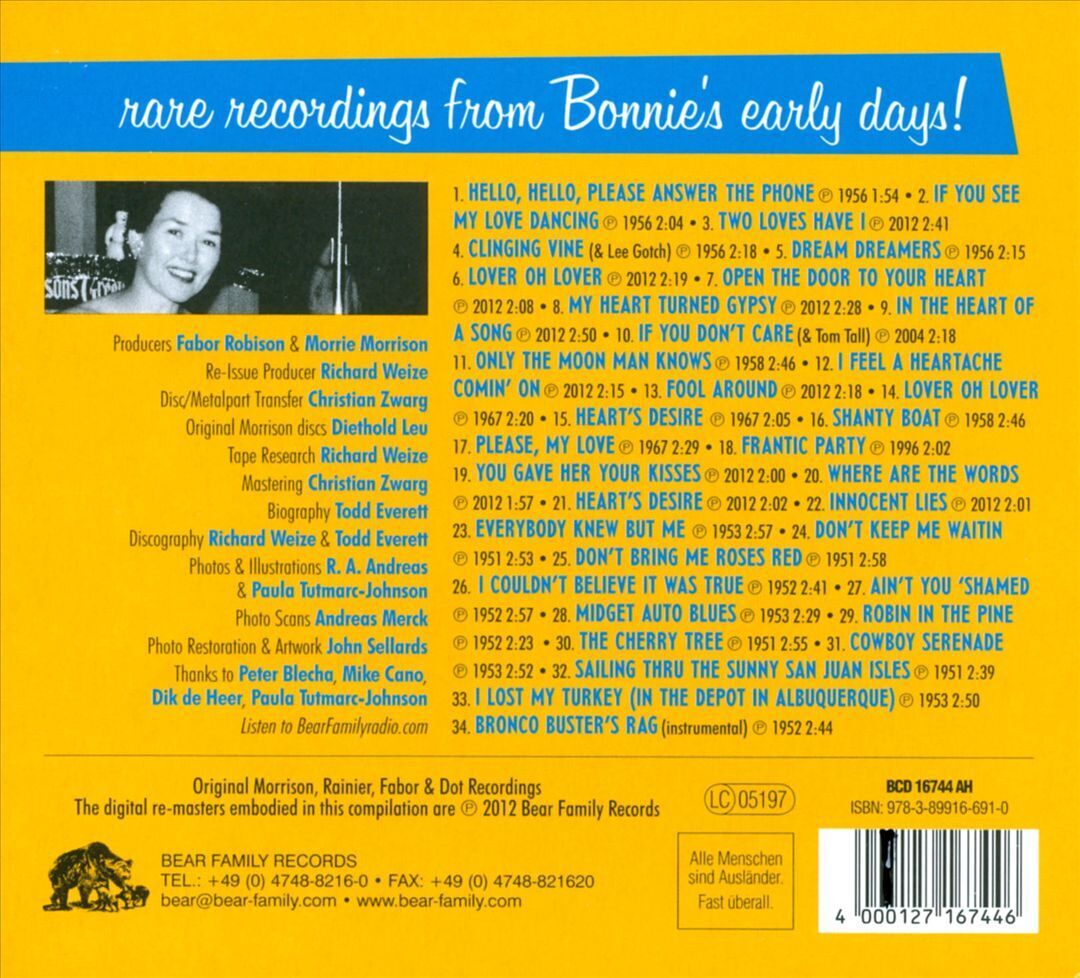

Bear Family Records [DE]
LOCATION: Germany
OWNER(s):
TIMESPAN:
MISC NOTES:
MISC NOTES: Released as part of Bear Family Records' Velvet Lounge series.
- Couldn't Believe It Was True
- I'm So Lonesome I Could Cry
- If Raindrops Were Kisses
- Honeycomb
- Slowly
- My Shoes Keep Walking Back to You
- Down By the Riverside
- I Really Don't Want to Know
- I Forgot to Remember to Forget
- You Win Again
- I Don't Hurt Anymore
- Singing the Blues
- Your Cheatin' Heart
- I Almost Lost My Mind
- Go Back You Fool
LOCATION: Hollywood
RECORDING PERSONNEL:
RECORDING STUDIO: RCA Victor
RECORDING ENGINEER: Don Robertson (producer)
FORMAT: CD
DISC NOTES: "For several sessions in 1959, Bonnie and her friend, songwriter and producer Don Robertson, holed up in RCA Victor's Hollywood studios in an unusual experiment: recording Bonnie's voice with solo guitar accompaniment. The repertoire ranged from standards, some of which she'd been singing for years in clubs, to new originals, and a couple of Roberson's own classics. Why were these tracks recorded? Bonnie says they were master sessions, though such informality was virtually unprecedented in 1959 (even Johnny Mathis's Open Fire: Two Guitars had a second guitar and a bass). Bonnie's By the Fireside includes 15 of the songs Bonnie and Don recorded back then, which are available here for the first time."
MISC NOTES: German compilation of some of Bonnie Guitar's early Seattle and Los Angeles recordings.
LOCATION: Seattle / Malibu / Los Angeles
RECORDING PERSONNEL:
RECORDING STUDIO:
RECORDING ENGINEER: Morrie Morrison (producer) / Fabor Robinson (producer)
FORMAT: CD
DISC NOTES:

MISC NOTES: Released as part of Bear Family Records' Velvet Lounge series.
- I'll Step Down
- Maybe
- Where Was I (When We Became Strangers)
- Three on a Match
- Broken Hearted Girl
- Crocodile Tears
- If My Tears Could Talk
- Who Is She?
- An Old Fashioned Love
- The Fool
- I'm Tired of Pride [Overdub] [Version]
- Tell Her Bye
- I'll Step Down [Alternate Take]
- I'm Tired of Pride [Overdub] [Version]
LOCATION:
RECORDING PERSONNEL: Bonnie Guitar (vocals, guitar); Don Robertson (vocals)
RECORDING STUDIO:
RECORDING ENGINEER:
FORMAT: CD
DISC NOTES: "In 1957, Bonnie Guitar recorded the haunting original version of 'Dark Moon'. Two years later, she signed with RCA Victor and recorded several sessions with a small band of Los Angeles session veterans, augmented by voices on one session, and strings on another. The result was some of the most blissfully poignant vocals ever committed to tape. On a par with Julie London, Peggy Lee, or any of the era's finest female artists. Singing in her languid ultra-lounge style and playing her white Gretsch Country Club guitar, Bonnie brought her distinctive, sultry vocal style to songs that were originally hits for the Ink Spots and Sanford Clark plus newer material from young songwriters like Hal David, Jeff Barry, and Harlan Howard. To that, she added a couple of her own originals. Four of these sides were released as singles; the rest remained unreleased in their original form until now."